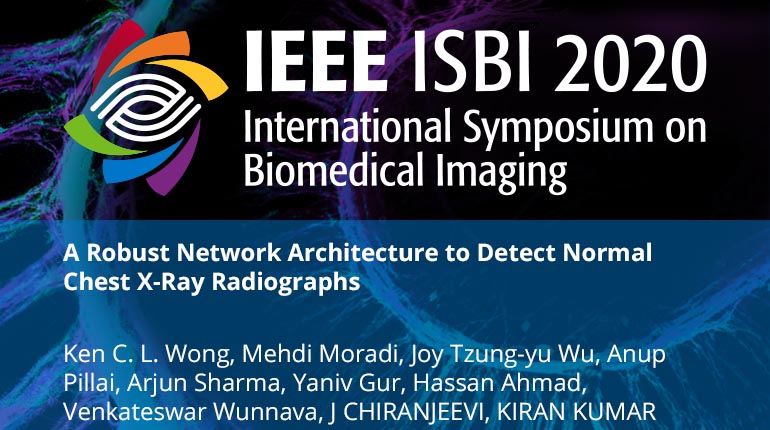
Already purchased this program?
Login to View
This video program is a part of the Premium package:
A Robust Network Architecture to Detect Normal Chest X-Ray Radiographs
- IEEE MemberUS $11.00
- Society MemberUS $0.00
- IEEE Student MemberUS $11.00
- Non-IEEE MemberUS $15.00
A Robust Network Architecture to Detect Normal Chest X-Ray Radiographs
We propose a novel deep neural network architecture for normalcy detection in chest x-ray images. This architecture treats the problem as fine-grained binary classification in which the normal cases are well-defined as a class while leaving all other cases in the broad class of abnormal. It employs several components that allow generalization and prevent overfitting across demographics. The model is trained and validated on a large public dataset of frontal chest X-ray images. It is then tested independently on images from a clinical institution of differing patient demographics using a three radiologist consensus for ground truth labeling. The model provides an area under ROC curve of 0.96 when tested on 1271 images. Using this model, we can automatically remove nearly a third of disease-free chest X-ray screening images from the workflow, without introducing any false negatives thus raising the potential of expediting radiology workflows in hospitals in future.
We propose a novel deep neural network architecture for normalcy detection in chest x-ray images. This architecture treats the problem as fine-grained binary classification in which the normal cases are well-defined as a class while leaving all other cases in the broad class of abnormal. It employs several components that allow generalization and prevent overfitting across demographics. The model is trained and validated on a large public dataset of frontal chest X-ray images. It is then tested independently on images from a clinical institution of differing patient demographics using a three radiologist consensus for ground truth labeling. The model provides an area under ROC curve of 0.96 when tested on 1271 images. Using this model, we can automatically remove nearly a third of disease-free chest X-ray screening images from the workflow, without introducing any false negatives thus raising the potential of expediting radiology workflows in hospitals in future.
 Cart
Cart Create Account
Create Account Sign In
Sign In





